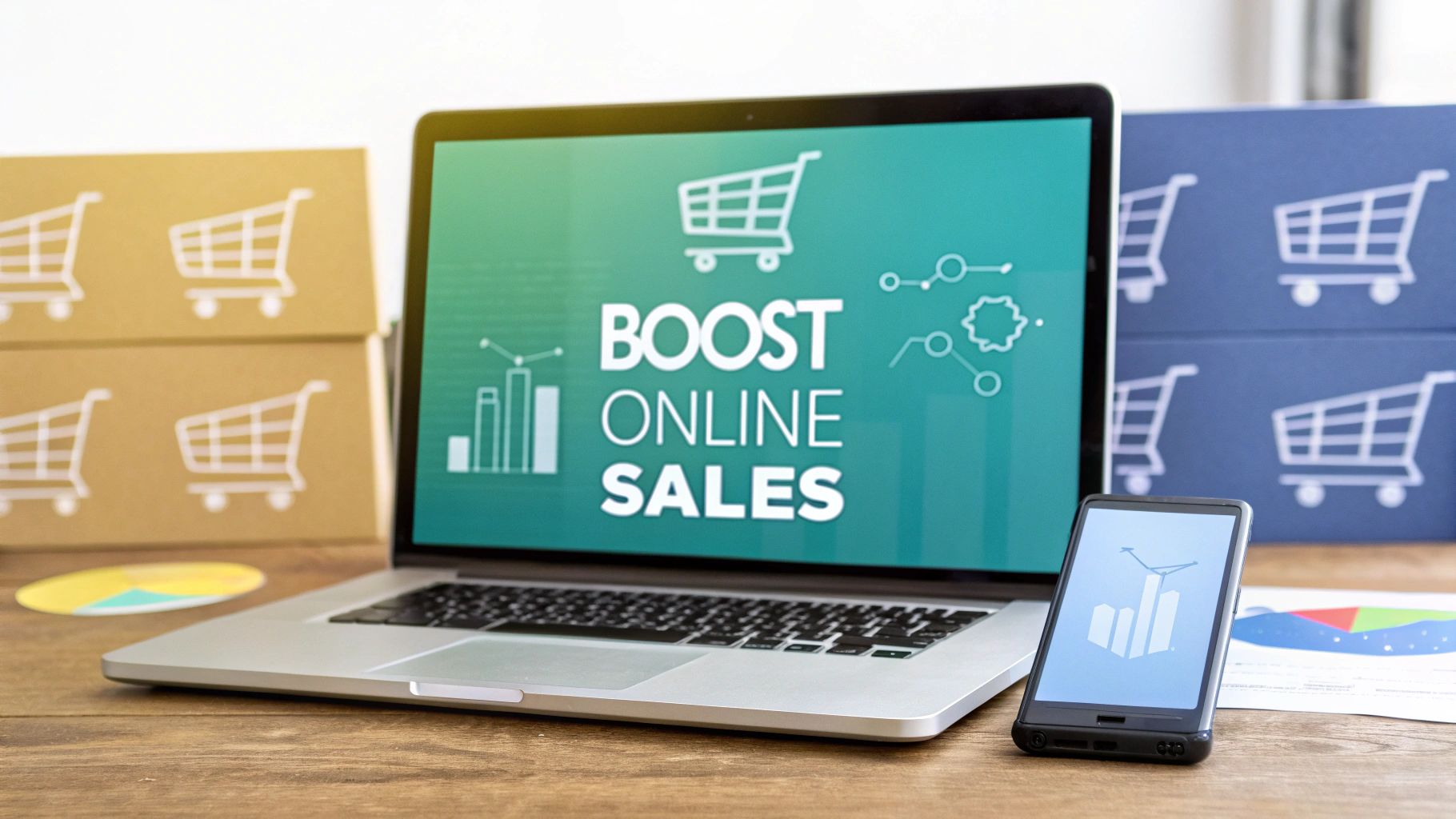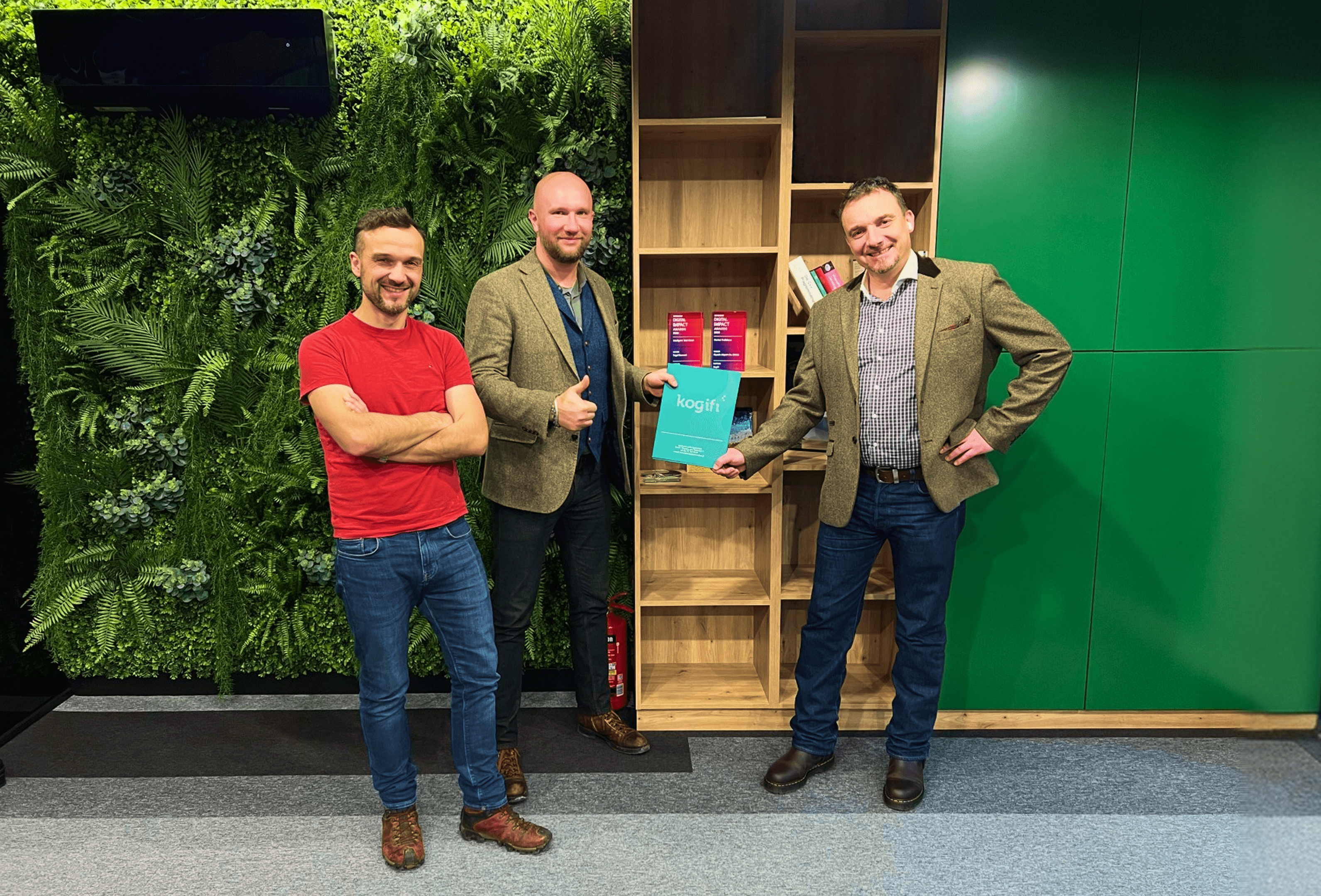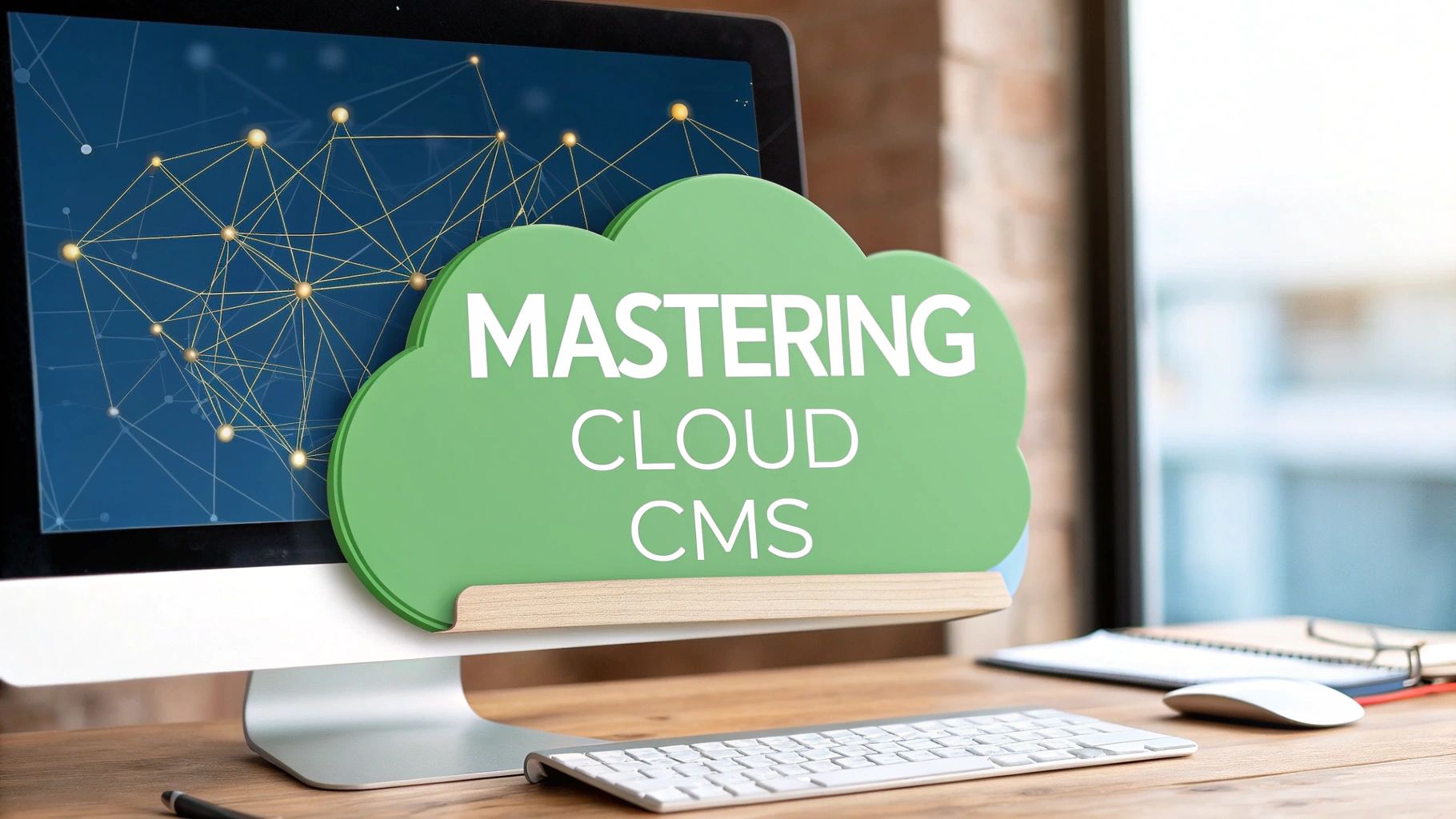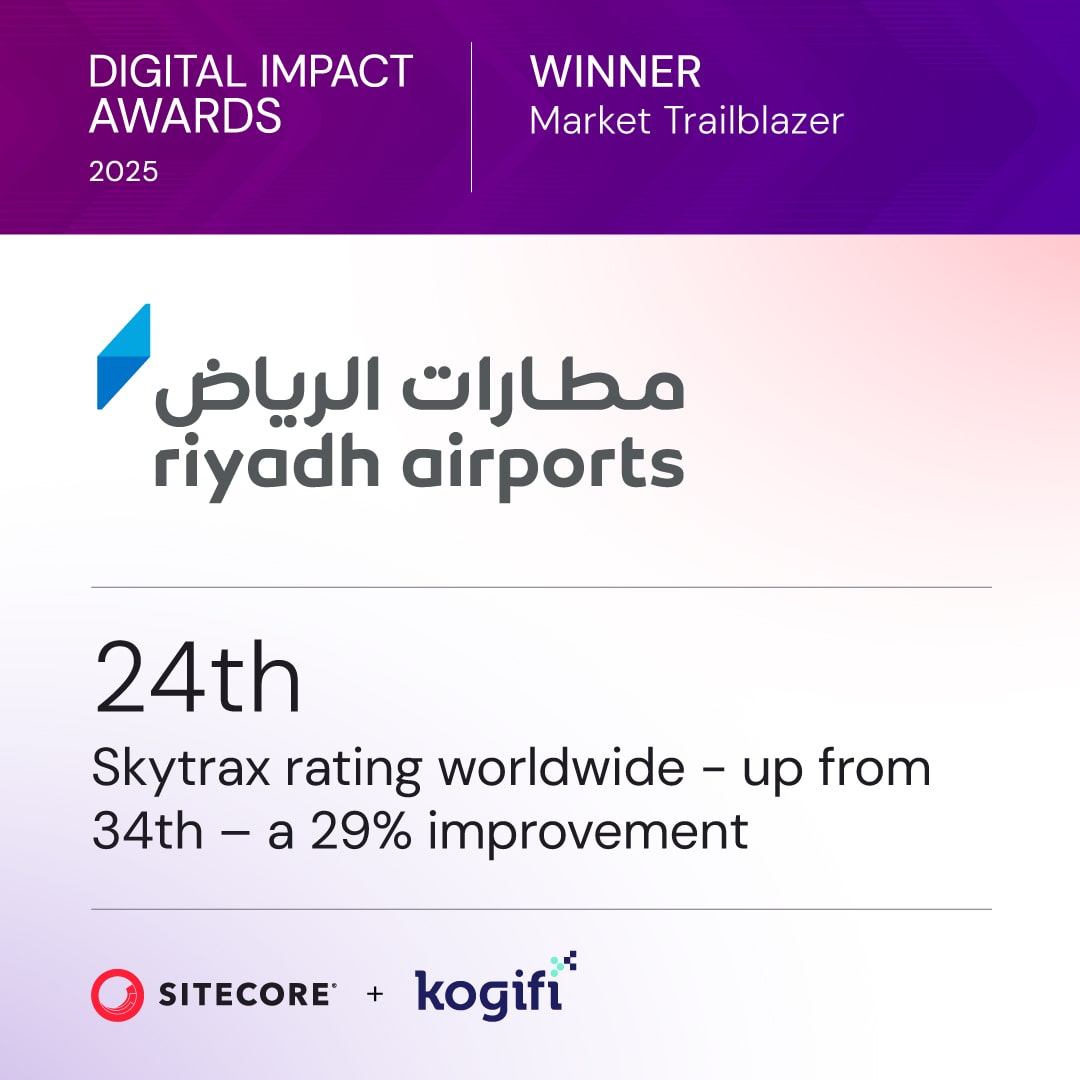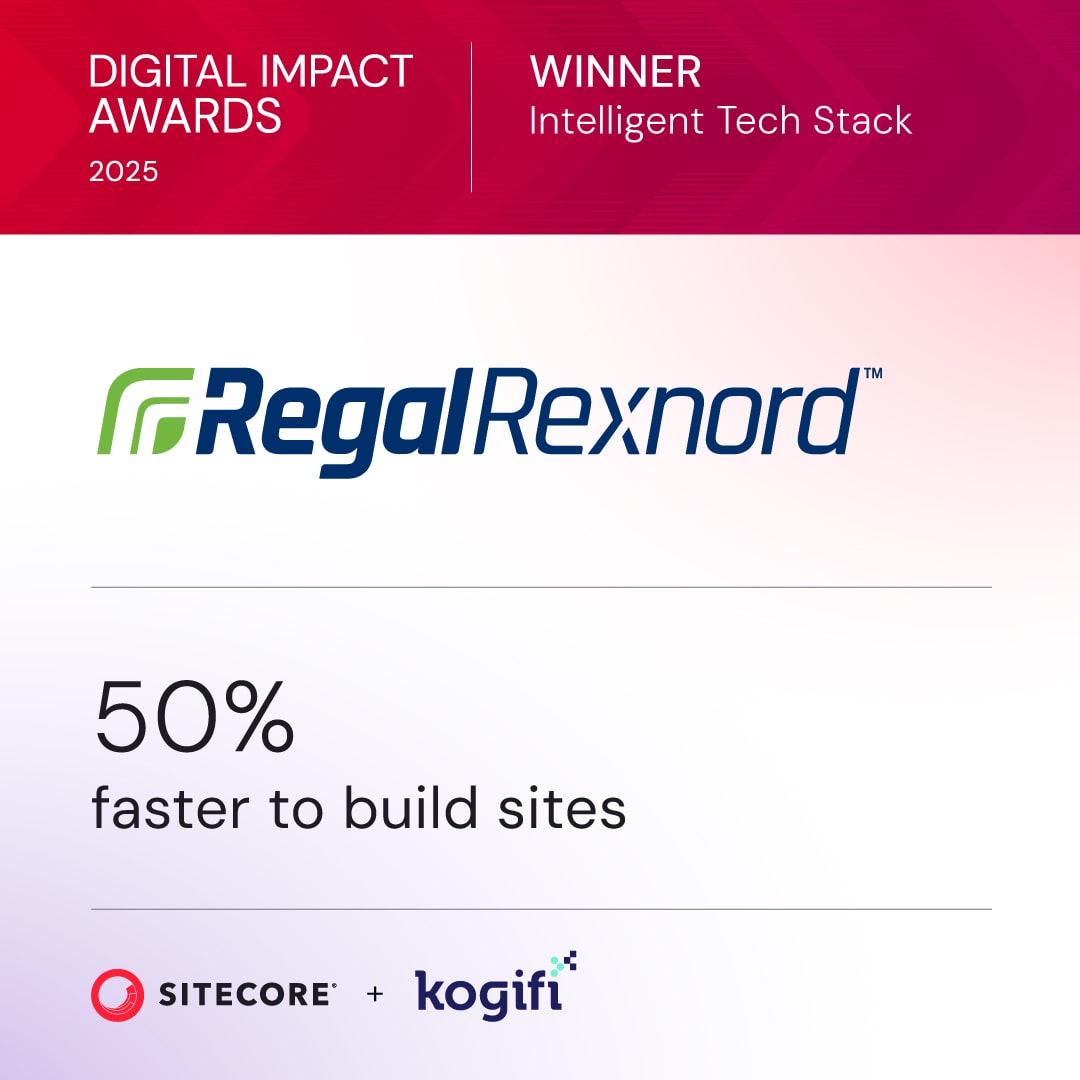If you want to grow online sales, you need a digital foundation that’s both powerful and ready to adapt to whatever customers want next. This means shifting away from rigid, all-in-one systems and embracing a more flexible, composable architecture. It’s this modern approach that lets you launch promotions in a flash, personalize customer journeys, and ultimately, drive more conversions.
Building Your Sales Engine with a Composable DXP
The journey to increasing online sales doesn't start with a single marketing campaign. It starts with the core technology that powers your entire digital presence. I've seen it time and again: traditional, monolithic platforms become a bottleneck, slowing down innovation and stopping teams from jumping on market opportunities.
A composable Digital Experience Platform (DXP), especially one built with Sitecore's portfolio, completely changes the game. Instead of one massive, clunky system, a composable DXP is a collection of best-in-class, independent services all connected through APIs. This “microservices” approach gives you incredible agility. Need to swap out your search tool or payment gateway? Go for it—without tearing down the whole platform.
The Power Duo: Sitecore XM Cloud and OrderCloud
At the heart of a high-performance sales engine are two key pieces of Sitecore tech: XM Cloud and OrderCloud.
Sitecore XM Cloud is a cloud-native, headless CMS that hands marketing teams the keys to the kingdom. They can create and deploy content to any channel—a website, a mobile app, even an in-store kiosk—without getting stuck in long IT development queues.
On the other side of the coin is Sitecore OrderCloud, which brings robust, API-first commerce capabilities to the table. It's built for complex B2B, B2C, or even B2X scenarios, giving you the freedom to build pretty much any commerce experience you can dream up. Imagine launching a highly specific, targeted promotion for a niche customer segment in just one afternoon. That's the kind of speed that lets you capitalize on trends and actually boost revenue.
The dashboard below gives a great visual of how a composable DXP provides real-time insights into the e-commerce metrics that are vital for growth.
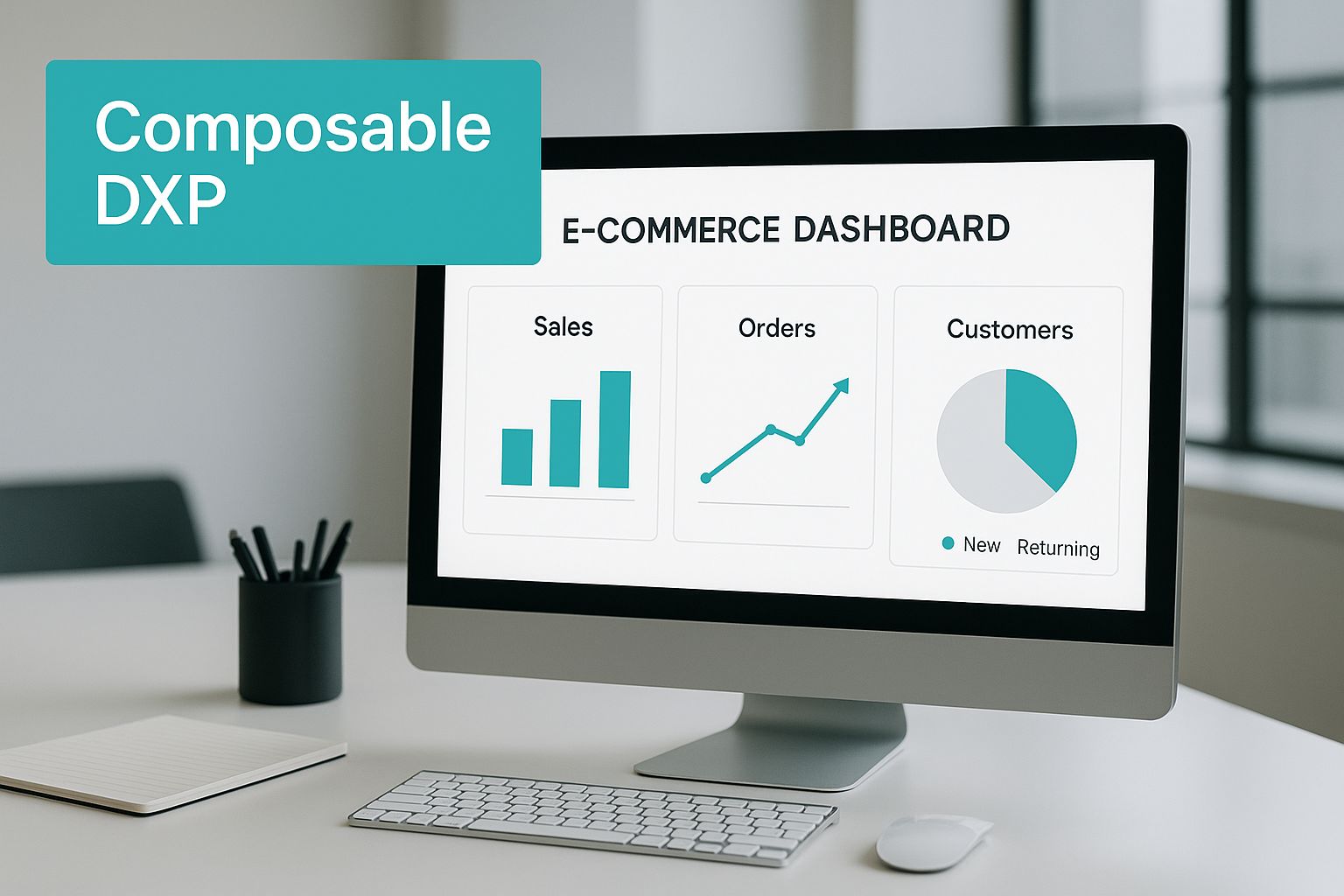
This level of data visibility, combined with the platform's flexibility, empowers you to make sharp, informed decisions that directly grow your bottom line.
Translating Flexibility into Tangible Sales Growth
So, how does this architectural choice actually lead to more online sales? The benefits are clear and measurable.
- Faster Time-to-Market: Launch new products, landing pages, and marketing campaigns in days, not months. This speed means you can grab opportunities your competitors, who are stuck on monolithic systems, will completely miss.
- Superior Customer Experiences: With a composable setup, you can plug in specialized tools for personalization or search, creating unique user journeys that old-school platforms just can't match. A better experience leads directly to higher conversion rates.
- Improved Site Performance: Headless architecture, a core part of Sitecore XM Cloud, almost always results in faster page load times. Since even a one-second delay can kill conversions, this performance boost is a huge deal for sales.
To see just how different these two approaches are, let's compare them side-by-side.
Monolithic vs Composable DXP Impact on Sales
This table makes it pretty clear: the agility and performance gains from a composable DXP like Sitecore aren't just technical wins; they're direct drivers of e-commerce growth.
A composable DXP isn't just a tech upgrade; it's a strategic business decision. It unties your hands, letting you build the exact customer experience you need to win in your market, without being held back by your platform's limitations.
This shift is crucial, especially as the digital marketplace keeps expanding. In 2025, global e-commerce sales are expected to hit around $6.42 trillion—a jump of nearly 7% from 2024. As the market grows, the ability to adapt quickly will be what separates the leaders from everyone else.
Tying It All Together with SharePoint and Other Strategies
While Sitecore forms the core of your customer experience and transactions, don't forget about operational efficiency. That's where a tool like SharePoint comes in. By integrating SharePoint, your e-commerce team can manage product information, marketing assets, and internal workflows all in one place. This kind of internal organization makes sure your customer-facing initiatives are backed by a well-oiled machine, helping you execute sales strategies even faster.
To round out your strategy, you can also explore other growth levers. For example, complementing a composable DXP with 10 powerful affiliate marketing strategies can open up entirely new revenue streams. And if you want to get into the technical nitty-gritty of the architecture itself, we have a detailed guide on how to future proofing with composable DXP architecture.
Driving Conversions with AI-Powered Personalization
A generic, one-size-fits-all website experience is one of the fastest ways to lose a potential sale. Today's customers don't just appreciate personalization; they expect it. They want interactions that understand their needs in the moment. This is where AI-powered personalization moves from a nice-to-have feature to a core strategy for anyone serious about increasing online sales.
The right approach can turn anonymous traffic into loyal, repeat buyers.
The trick is to make every single interaction feel like a one-on-one conversation. Platforms like Sitecore provide the tools to make this a reality, moving way beyond basic segmentation to deliver hyper-personalized journeys that directly boost engagement and, ultimately, conversions.
From Anonymous Visitors to Known Customers
It all starts the moment a user lands on your site. Using a tool like Sitecore Discover, you can immediately begin tailoring their experience based on their real-time behavior. This AI-driven search and merchandising tool analyzes what a user clicks on, searches for, and adds to their cart, then uses that data to instantly refine what they see next.
Imagine a visitor searches for "running shoes." Sitecore Discover doesn't just show a static list. It can prioritize results based on the brand they clicked on last session or feature shoes that are trending with similar users. This dynamic approach keeps the most relevant products front and center, dramatically cutting down the friction between search and purchase.
Crafting Real-Time Personalized Experiences
Once you have this behavioral data, Sitecore Personalize takes things a step further. This is where you can design and execute sophisticated personalization rules and A/B tests to optimize every single component of the customer journey. We’re not just talking about showing different products; it's about altering the entire digital experience based on who the user is and what they're trying to do.
Here are a few practical scenarios of how this plays out:
- Dynamic Promotional Banners: A first-time visitor might see a "Get 10% Off Your First Order" banner. A returning loyalty member, on the other hand, could be shown an exclusive "Early Access to New Arrivals" offer, making them feel seen and valued.
- Tailored Calls-to-Action (CTAs): For a user who has previously browsed high-end products, a CTA button might read "Request a Private Consultation." For a more price-conscious shopper, that same button could say "View Sale Items."
- Contextual Content Delivery: If a user lands on your site from a blog post about sustainable fashion, the homepage can dynamically feature your eco-friendly product line. Simple, but incredibly effective.
The goal of personalization is not just to show relevant items but to prove you understand the customer's intent at that exact moment. This builds trust and transforms a simple transaction into a meaningful brand interaction.
This level of detail is what turns casual interest into real revenue. It’s a continuous cycle of listening to user behavior and responding with the most helpful content or offer—all orchestrated automatically by the AI.
Integrating SharePoint for Enhanced Personalization
For your personalization efforts to be truly effective, the underlying product information and marketing content must be accurate and consistent. This is where a SharePoint solution perfectly complements your Sitecore DXP. By using SharePoint as a centralized hub for product specs, high-resolution imagery, and marketing campaign assets, you create a single source of truth.
This integration ensures that when Sitecore Personalize pulls content for a dynamic banner or a product recommendation, it’s always using the most up-to-date and approved information. This kind of operational efficiency prevents the little inconsistencies that can erode customer trust and harm the user experience, indirectly supporting your efforts to increase online sales.
For a deeper dive into the mechanics of implementing these strategies, you can explore our comprehensive AI personalization in DXP implementation guide, which provides a detailed roadmap.
To get an even broader perspective on using AI to boost sales, it's worth exploring how end-to-end AI sales copilot solutions can enhance your conversion efforts by automating even more of the sales workflow. When you combine a powerful DXP with smart internal processes, you build a robust engine for sustainable online growth.
Optimizing the Path to Purchase
A seamless user experience isn't just a nice-to-have anymore; it's the bedrock of online sales. Every confusing step, slow-loading page, or clunky form is a roadblock between your customer and a completed purchase. To win, you have to meticulously smooth out the entire customer journey, and that’s where a powerful, flexible commerce platform becomes your greatest ally.

We're not just talking about generic UX tips here. Let’s get into concrete strategies using Sitecore's platform. A composable, API-first solution like Sitecore OrderCloud gives you the toolkit to design an intuitive, frictionless checkout that actively builds trust and slashes the number of steps a customer has to take. It's all about eliminating every possible reason for cart abandonment.
Designing a Frictionless Checkout with Sitecore OrderCloud
The real power of Sitecore OrderCloud comes from its API-first architecture. Unlike rigid, monolithic systems that shoehorn you into a predefined checkout flow, OrderCloud lets you build the exact experience your customers want. You get granular control over every single element, from the shopping cart to the final confirmation page.
This flexibility is what allows you to make the critical UX tweaks that directly boost revenue. For example, you can easily set up a streamlined, one-page checkout for simple B2C purchases or a more detailed, multi-step process for complex B2B orders with custom fields.
Here are a few key strategies you can implement with OrderCloud:
- Guest Checkout Options: Forcing users to create an account is a notorious conversion killer. OrderCloud's APIs make it simple to offer a seamless guest checkout, capturing the sale first and offering account creation later.
- Minimal Form Fields: Only ask for what is absolutely necessary to complete the order. With OrderCloud, you can customize checkout forms to remove any field that isn't essential, speeding up the process significantly.
- Multiple Payment Gateways: Integrate popular payment options like Apple Pay or Google Pay with ease. Offering familiar, trusted payment methods reduces hesitation and makes the purchase decision easier.
A frictionless path to purchase isn't just about speed; it's about building user confidence at every step. Each intuitive interaction and transparent process reinforces the customer's decision to buy from you.
By focusing on these practical techniques, you can diagnose and fix the specific points of friction that cause shoppers to leave. If you want to dive deeper, our guide on how to improve ecommerce conversion rates offers additional actionable advice.
Adopting a True Mobile-First Commerce Strategy
A smooth desktop experience isn't enough. The future of online sales is overwhelmingly mobile. In fact, mobile commerce is projected to account for about 59% of all global ecommerce transactions in 2025, which translates to a staggering $2.51 trillion in sales. What’s more, mobile shopping apps often convert at a rate three times higher than mobile websites, hammering home the value of an optimized mobile presence.
Going "mobile-first" means designing the commerce experience for the smallest screen first, then scaling up. This approach guarantees your site performs flawlessly on the devices where most shoppers are actually browsing and buying. Sitecore's headless capabilities are perfect for this, allowing you to deliver fast, optimized experiences to any device or channel from a single content source.
The Role of SharePoint in Streamlining Product Journeys
While Sitecore handles the customer-facing experience, internal organization is just as crucial for maintaining a smooth path to purchase. This is where a robust SharePoint solution becomes invaluable. By using SharePoint as a central hub for all product information, you ensure the details customers see are always accurate and consistent.
Imagine a customer is about to buy a product but notices conflicting specs on the page. That one small inconsistency can be enough to break their trust and kill the sale.
Here’s how SharePoint helps create a better purchase path:
This connection between a headless DXP like Sitecore and an organizational tool like SharePoint creates a powerful ecosystem. It ensures that the specific UX improvements you make—from faster page loads to simpler navigation—are backed by accurate, reliable data, directly impacting your ability to increase online sales.
Unifying Your Omnichannel Commerce Strategy
Your customers don’t see channels. They see one brand. Whether they’re scrolling through Instagram on their phone, walking into your store, or browsing your website on a laptop, they expect a seamless, connected experience. To really drive online sales, you have to move beyond just being present on multiple channels and build a true omnichannel strategy where every single touchpoint works together.
This is where the right technology makes all the difference, and a powerful combination of Sitecore products is built for exactly this challenge. The goal is to create a unified brand experience everywhere, turning what used to be separate interactions into one long, flowing conversation with your customer. This isn't just about being consistent; it's about earning the kind of loyalty that brings people back again and again.

Building the Single Customer View with Sitecore CDP
Any great omnichannel strategy is built on a foundation of data. You simply can't deliver a connected experience if you don't have a complete picture of who your customer is. This is the exact problem Sitecore CDP (Customer Data Platform) was designed to solve. Think of it as a central brain, pulling in and stitching together customer data from every possible source.
Just consider all the places a customer interacts with you:
- Digital Channels: Website visits, mobile app usage, email clicks, and social media likes.
- In-Person Touchpoints: Purchases made at your in-store point-of-sale (POS) systems, event check-ins, or calls with customer service.
- Third-Party Data: Information pulled from your CRM or other marketing platforms.
Sitecore CDP takes all this information—from both known customers and anonymous visitors—and merges it into one comprehensive, real-time profile. This is the single customer view. It’s a living record of every interaction, preference, and behavior, giving you a crystal-clear understanding of each person.
Activating Data with Sitecore XM Cloud
Having a single customer view is powerful, but the real magic happens when you use that data to shape the customer experience on the fly. This is where Sitecore XM Cloud steps in. As a headless, cloud-native CMS, XM Cloud is engineered to push consistent, personalized content to any touchpoint you can imagine.
Because XM Cloud integrates so tightly with Sitecore CDP, it can tap into that rich customer profile to make every interaction smarter. The headless architecture means you can deliver the same core brand message, perfectly tailored to the channel—whether it's a smartwatch, a voice assistant, a digital sign in-store, or your main website.
An omnichannel strategy powered by Sitecore isn't about making every channel look identical. It's about making every channel intelligent. The experience should pick up exactly where the customer left off, no matter what device they're using now.
This unified approach lets you craft those seamless journeys that translate directly into more online sales.
A Real-World Omnichannel Journey in Action
Let’s walk through a quick example. Imagine a customer named Sarah.
- Discovery on Social Media: Sarah is scrolling through Instagram and sees a targeted ad for a new jacket. She clicks it. Sitecore CDP immediately logs this as her first touchpoint, noting her interest in that product category.
- Browsing on Mobile: Later that day, she pulls out her phone and visits your website to look at jackets. Because Sitecore CDP has already identified her (even as an anonymous user), the homepage dynamically shows a banner with new arrivals in the jacket category. She finds one she likes, adds it to her cart, but gets distracted and leaves.
- Completing the Purchase on Desktop: The next morning, Sarah opens her laptop and goes to your site. XM Cloud, powered by the CDP data, instantly recognizes her. Not only is the jacket still in her cart, but a subtle pop-up offers free shipping to complete the purchase—an incentive triggered because the system knows she abandoned her cart. She buys the jacket.
For Sarah, this journey felt completely natural and helpful. Behind the scenes, it was orchestrated by a sophisticated, unified data and content strategy. This is how you turn casual interest into actual revenue.
This kind of connected commerce is absolutely critical today. Projections show that an estimated 2.77 billion people will be shopping online by 2025. On top of that, social commerce is exploding, with revenue jumping by nearly 20% in a single year to hit $683.9 billion in 2024. You can dig into more digital commerce statistics to see just how big this opportunity is.
Integrating SharePoint for Operational Consistency
Finally, you can’t have a unified customer experience without a unified internal team. This is where a tool like SharePoint becomes the operational backbone, ensuring all the content and information your teams use is perfectly consistent.
By creating a central SharePoint hub for brand guidelines, campaign assets, and product information, you guarantee that the messaging being pushed out through XM Cloud is always accurate and on-brand. This simple step prevents the small inconsistencies across channels that can erode customer trust and break the seamless journey you’ve worked so hard to build. When your internal operations are unified, your external customer experience will be, too.
It’s easy to get laser-focused on your customer-facing technology like Sitecore to capture sales. But what about the engine running behind the scenes? The internal processes that support your e-commerce team are just as critical. When workflows are a mess, product information is scattered, and marketing assets are all over the place, you create massive bottlenecks.
Those internal frictions slow down your time-to-market and, you guessed it, put a cap on your ability to increase online sales.
This is where a robust platform like SharePoint can give you a serious strategic advantage. Think of it as the central nervous system for your entire e-commerce operation. It ensures everyone—from marketers to product managers—is working from a single, reliable source of truth.
Structuring a Centralized Knowledge Base
First things first, you need to build a comprehensive knowledge base in SharePoint that holds all your critical information. When your team has instant, reliable access to accurate data, they can launch campaigns and update product listings with speed and confidence. A messy information system, on the other hand, just leads to costly errors that can erode customer trust and lose you sales.
Consider structuring your SharePoint site with dedicated libraries for these key assets:
- Product Information Management (PIM): This is your master library for all product details—SKUs, descriptions, specs, and pricing tiers. No more discrepancies across different sales channels.
- Digital Asset Management (DAM): Create a dedicated space for all approved marketing materials. We're talking high-resolution product images, promotional videos, and campaign banners. This is how you lock in brand consistency.
- Brand Guidelines: This is home base for your official brand book, logos, color palettes, and tone of voice documents. It’s essential for maintaining a unified brand presence in every single customer interaction.
By centralizing these core components in SharePoint, you create an operational backbone that directly powers your sales initiatives. When your team isn’t wasting time hunting down the latest version of a file, they can focus on activities that actually grow the business.
Designing Streamlined Content Workflows
Beyond just being a digital filing cabinet, SharePoint’s real power comes from its workflow automation. You can design and roll out streamlined processes for content creation, review, and approval that hook directly into your Sitecore DXP. That integration is a game-changer for getting new products and promotions out the door faster.
Imagine your marketing team wants to launch a flash sale. The old way probably involved a chaotic chain of emails, Slack DMs, and confusing shared documents—a recipe for delays. With a SharePoint workflow, the whole process becomes clean, orderly, and transparent.
A typical workflow could look something like this:
- A marketer kicks off a new campaign request in a SharePoint list.
- That request automatically gets routed to the content team to create the copy and visuals.
- Once drafts are uploaded, the workflow pings the brand manager for approval.
- After approval, the assets are automatically published to a "ready for Sitecore" library, giving the web team the green light to deploy.
This kind of structured process slashes the "time-to-live" for new content. When you can react to market opportunities in hours instead of days, you're in a much better position to capture those immediate sales. The efficiency you gain from well-designed SharePoint solutions helps your team become more agile and responsive, a key factor in growing online revenue.
Ultimately, a well-oiled internal machine ensures that the seamless customer experiences you build in Sitecore are supported by equally seamless operations behind the curtain.
Your Biggest Questions Answered
So, you've seen how a composable DXP, smart AI, and smoother operations can completely change the game for your online sales. But when it comes to adopting a powerful toolset like Sitecore's, some practical questions always come up. Let's dig into the common ones and connect the technology to real, tangible business results.
How Does a Composable DXP Actually Increase Revenue?
In a word: speed. A composable Digital Experience Platform (DXP) like Sitecore drives revenue by letting you be faster and more flexible than your competition. With old-school, monolithic platforms, launching a new feature or a marketing campaign can get bogged down in long development cycles.
A composable setup lets you plug in new tools—like a different payment gateway or a niche personalization engine—in a fraction of the time.
This agility means you can jump on market trends now, not next quarter. Think about launching a flash sale or dropping a new product line in days instead of months. You're capturing revenue while slower competitors are still in planning meetings. On top of that, the performance boost from a headless CMS like Sitecore XM Cloud has a direct impact on conversions. We all know that even a one-second delay in page load time sends sales plummeting.
What's the Real-World Impact of AI Personalization?
The true business impact of AI personalization, especially with a tool like Sitecore Personalize, is a direct lift in your Average Order Value (AOV) and Customer Lifetime Value (CLV). Instead of greeting every visitor with the same generic homepage, the AI serves up product recommendations, content, and offers that are actually relevant to them, based on what they're doing on your site right now.
Imagine someone was browsing your high-end cameras last week. The next time they visit, the AI can automatically feature premium lenses and tripods on the homepage. Suddenly, you've increased the odds of a much larger purchase. By making every interaction feel more personal and relevant, you’re not just boosting the value of a single transaction—you’re building the kind of loyalty that turns one-time buyers into customers for life.
Can SharePoint Really Help Boost Sales?
It’s a fair question. SharePoint doesn't face customers directly, but it plays a massive supporting role by cleaning up your operational efficiency. A disorganized backend is a silent revenue killer. When your marketing and product teams are scrambling to find the right digital assets or are working from outdated spreadsheets, campaigns get delayed and your website content becomes a mess of inconsistencies.
By using SharePoint as the central hub for all product information, marketing assets, and brand guidelines, you create a single source of truth. This discipline ensures the personalized experiences you’re delivering with Sitecore are always accurate and on-brand.
Think of it this way: a well-oiled SharePoint environment is what allows your team to get new promotions and products to market faster. That speed and consistency prevents the small but costly errors that erode customer trust and lets your team execute sales strategies without tripping over themselves.
How Do I Even Get Started with a Sitecore Implementation?
Jumping into a platform as robust as Sitecore can feel overwhelming, but it doesn’t have to be. The secret is to take a phased approach instead of trying to boil the ocean with a massive, all-at-once overhaul.
Start by zeroing in on your single biggest sales bottleneck. Is it a clunky, multi-step checkout process? A total lack of personalization?
Focus on fixing that one thing first. For example, you could begin by implementing Sitecore OrderCloud to completely redesign and simplify your checkout experience. Once you see a tangible ROI from that first project, you can build on that success and move on to integrating Sitecore Personalize to sharpen your product recommendations.
This incremental strategy lets you show value quickly, which helps get stakeholders excited and builds momentum for a full digital transformation. The key, of course, is working with an expert implementation partner who can ensure each phase is done right and aligns with your long-term revenue goals.
At Kogifi, we live and breathe this stuff. We specialize in designing and implementing high-performance digital experience platforms that drive real, measurable business growth. Our deep expertise in both Sitecore and SharePoint ensures your tech stack is perfectly tuned to the only goal that matters: increasing your online sales.
Ready to build a powerful sales engine? Contact us today to see how we can transform your digital presence.

















